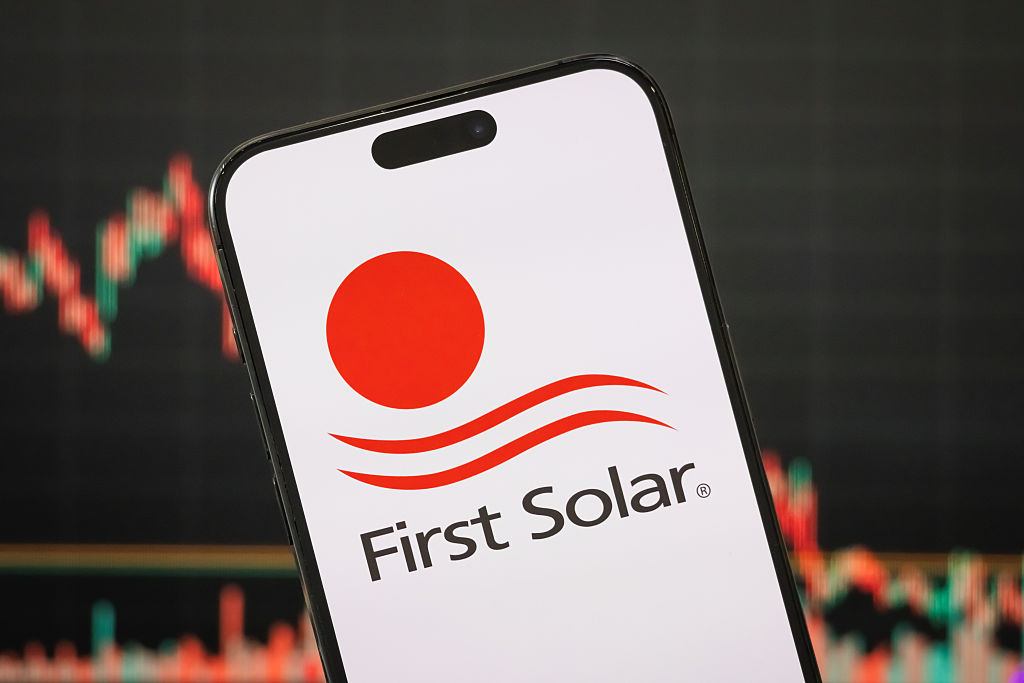First Solar is set to shine – should you invest?
Solar-power specialist First Solar will benefit from Donald Trump’s policies, says Matthew Partridge


The US has been undergoing a quiet energy revolution. The amount of energy produced by solar, wind and geothermal sources has more than tripled over the last decade. Solar energy has been one of the big winners.
Total installed capacity has grown eightfold, while solar power’s share of new energy capacity has expanded almost continuously from a minuscule 4% in 2010 to 66% in 2024, a figure that rises to 84% when you include storage. While Trump’s return to the White House has cast doubt on the subsector’s progress, even he may not be able to stop its rise. That is good news for firms like First Solar (Nasdaq: FSLR).
For most of its history, First Solar has focused on making and installing solar panels; it is still the seventh-largest manufacturer of photovoltaic (solar) power cells in the world. However, in the past few years, it has shifted its emphasis from panels for retail customers to utilities and now makes much of its money from building and maintaining solar power plants.
MoneyWeek
Subscribe to MoneyWeek today and get your first six magazine issues absolutely FREE

Sign up to Money Morning
Don't miss the latest investment and personal finances news, market analysis, plus money-saving tips with our free twice-daily newsletter
Don't miss the latest investment and personal finances news, market analysis, plus money-saving tips with our free twice-daily newsletter
This shift has proved a shrewd move, as power companies have been eager to invest in solar energy in order to secure a range of tax credits and mandates from both the US government and individual states, notably the Inflation Reduction Act of 2022.
Silver linings for First Solar
Even though Donald Trump’s new bill curtails many of Joe Biden’s incentives for solar power, there are several silver linings for First Solar. Firstly, the tax credits for utilities will last longer than those for residential panels, while Trump’s changes won’t affect state-level mandates.
Most importantly, Trump’s tariff policies mean that the solar panels sold by Chinese rivals, who currently dominate the market, accounting for seven out of ten of the world’s largest producers, are now much more expensive. While the tariffs have also increased the price of many components that First Solar imports, the net impact of the tariffs is so positive for First Solar that even when you take the subsidy cuts into account, the group is in a better position than it was before Trump arrived in office, according to management.
First Solar has made excellent progress over the past few years, with sales rising from $3.06 billion in 2019 to $4.21 billion five years later – an increase of 40%. Sales are expected to grow even faster in future, increasing by around 50% in the next two years. Normalised earnings per share have jumped more than tenfold between 2019 and 2024, while operating margins have swelled, and the company now boasts a double-digit return on capital employed. Despite this, First Solar is still valued at only eight times 2026 earnings.
With First Solar recently upgrading its profit forecasts, the stock has been on a tear, beating the wider market over the last six months. It is also trading above its 50-day and 200-day moving averages. I therefore suggest that you go long at the current price of $184 at £11 per $1. In that case I recommend putting the stop-loss at $100, which gives you a total downside risk of £924.
This article was first published in MoneyWeek's magazine. Enjoy exclusive early access to news, opinion and analysis from our team of financial experts with a MoneyWeek subscription.
Get the latest financial news, insights and expert analysis from our award-winning MoneyWeek team, to help you understand what really matters when it comes to your finances.

-
 Investors will reap long-term rewards from UK equities
Investors will reap long-term rewards from UK equitiesOpinion Nick Train, portfolio manager, Finsbury Growth & Income Trust, highlights three UK equities where he’d put his money
-
 The graphene revolution is progressing slowly but surely
The graphene revolution is progressing slowly but surelyEnthusiasts thought the discovery that graphene, a form of carbon, could be extracted from graphite would change the world. They might've been early, not wrong.
-
 The steady rise of stablecoins
The steady rise of stablecoinsInnovations in cryptocurrency have created stablecoins, a new form of money. Trump is an enthusiastic supporter, but its benefits are not yet clear
-
 Goodwin: A superlative British manufacturer to buy now
Goodwin: A superlative British manufacturer to buy nowVeteran engineering group Goodwin has created a new profit engine. But following its tremendous run, can investors still afford the shares?
-
 A change in leadership: Is US stock market exceptionalism over?
A change in leadership: Is US stock market exceptionalism over?US stocks trailed the rest of the world in 2025. Is this a sign that a long-overdue shift is underway?
-
 King Copper’s reign will continue – here's why
King Copper’s reign will continue – here's whyFor all the talk of copper shortage, the metal is actually in surplus globally this year and should be next year, too
-
 Coreweave is on borrowed time
Coreweave is on borrowed timeAI infrastructure firm Coreweave is heading for trouble and is absurdly pricey, says Matthew Partridge
-
 Profit from document shredding with Restore
Profit from document shredding with RestoreRestore operates in a niche, but essential market. The business has exciting potential over the coming years, says Rupert Hargreaves
-
 New frontiers: the future of cybersecurity and how to invest
New frontiers: the future of cybersecurity and how to investMatthew Partridge reviews the key trends in the cybersecurity sector and how to profit
-
 Build or innovate? How to solve the productivity puzzle
Build or innovate? How to solve the productivity puzzleOpinion There are two main schools of thought when it comes to solving the productivity puzzle, says David C. Stevenson